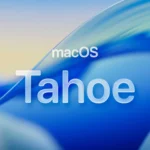APT vs Snap vs Flatpak vs AppImage: Ubuntu Package Managers Differences Explained (and When to Use Each)

In the world of Linux, particularly Ubuntu, package managers play a crucial role in software installation, updates, and management. The four most prominent package managers and formats in the Ubuntu ecosystem are APT, Snap, Flatpak, and AppImage. Each has its own strengths, use cases, and ideal scenarios. This article will delve into the details of APT, Snap, Flatpak, and AppImage, explaining their differences and helping you understand when to use each.
APT (Advanced Package Tool)
Overview
APT is the traditional package management system for Debian-based distributions, including Ubuntu. It handles the installation, updating, and removal of software packages. APT uses .deb packages and relies on repositories to fetch and manage software.
Key Features
- Dependency Management: APT automatically handles dependencies, ensuring that all required libraries and packages are installed.
- Repository-Based: Software is fetched from centralised repositories, which are maintained and updated by the distribution maintainers.
- Command-Line Interface: APT is primarily used through command-line tools like
apt-get,apt-cache, andapt.
When to Use APT
- System-Level Packages: Use APT for installing system-level packages and dependencies that are critical for the operating system.
- Stability: If you need stable, well-tested software, APT is the way to go, as packages in the official repositories are thoroughly tested.
- Offline Installation: APT allows you to download packages and install them offline, which can be useful in environments with limited internet access.
Example Commands
sudo apt update sudo apt install package-name sudo apt upgrade
Snap
Overview
Snap is a package management system developed by Canonical, the company behind Ubuntu. Snap packages, or ‘snaps’, are self-contained and include all the dependencies needed to run the application. Snaps are distributed through the Snap Store.
Key Features
- Self-Contained: Snaps bundle all dependencies, making them independent of the underlying system.
- Automatic Updates: Snaps automatically update to the latest version, ensuring you have the newest features and security patches.
- Cross-Distribution: Snaps can be installed on any Linux distribution that supports Snap, not just Ubuntu.
When to Use Snap
- Latest Software: If you need the latest version of an application, Snap is often the best choice, as snaps are updated more frequently than APT packages.
- Isolation: Use Snap for applications that benefit from isolation, such as development tools or sandboxed environments.
- Cross-Distribution Compatibility: If you need to distribute your application across multiple Linux distributions, Snap is a good option.
Example Commands
sudo snap install package-name sudo snap refresh sudo snap remove package-name
Flatpak
Overview
Flatpak is a universal package management system that allows applications to be distributed and run on any Linux distribution. Flatpak packages are also self-contained and include all necessary dependencies.
Key Features
- Sandboxing: Flatpak applications run in a sandboxed environment, enhancing security by isolating applications from the system and each other.
- Flexibility: Flatpak supports multiple runtimes, allowing developers to choose the best runtime for their application.
- Decentralised: Unlike Snap, Flatpak is decentralised, meaning anyone can host a Flatpak repository.
When to Use Flatpak
- Security: Use Flatpak for applications that require enhanced security through sandboxing.
- Flexibility: If you need the flexibility to choose different runtimes or host your own repository, Flatpak is a good choice.
- Cross-Distribution Compatibility: Like Snap, Flatpak is ideal for distributing applications across multiple Linux distributions.
Example Commands
sudo flatpak install flathub package-name sudo flatpak update sudo flatpak uninstall package-name
AppImage
Overview
AppImage is a format for distributing portable software on Linux without needing superuser permissions to install the application. AppImages are self-contained and include all the dependencies needed to run the application.
Key Features
- Portability: AppImages are portable and can be run on any Linux distribution without installation.
- No Dependencies: AppImages bundle all necessary dependencies, making them independent of the underlying system.
- Ease of Use: AppImages are simple to use; just download the file, make it executable, and run it.
When to Use AppImage
- Portability: Use AppImage for applications that need to be portable and run on any Linux distribution without installation.
- Ease of Distribution: If you want to distribute your application easily without worrying about dependencies, AppImage is a great choice.
- No Root Access: AppImages do not require root access to run, making them ideal for environments where superuser permissions are restricted.
Example Commands
chmod +x application.AppImage ./application.AppImage
Comparison Table
| Feature | APT | Snap | Flatpak | AppImage |
|---|---|---|---|---|
| Package Format | .deb |
.snap |
.flatpak |
.AppImage |
| Dependency Management | Repository-based | Self-contained | Self-contained | Self-contained |
| Update Mechanism | Manual/Scheduled | Automatic | Manual/Scheduled | Manual |
| Sandboxing | No | Yes | Yes | No |
| Cross-Distribution | No | Yes | Yes | Yes |
| Repository Management | Centralised | Centralised (Snap Store) | Decentralised | Decentralised |
| Portability | No | No | No | Yes |
Conclusion
Choosing the right package manager or format depends on your specific needs and use cases. APT is ideal for system-level packages and stable software, Snap is great for the latest applications and cross-distribution compatibility, Flatpak offers enhanced security and flexibility, and AppImage provides portability and ease of distribution. Understanding the strengths and ideal scenarios for each package manager and format will help you make informed decisions for software management on Ubuntu.





Comments